Chevrolet Camaro - index
Chevrolet Camaro - pictures
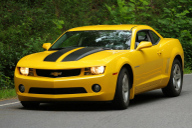 Chevrolet Camaro, 2011, yellow/black bumblebee
Chevrolet Camaro, 2011, yellow/black bumblebee
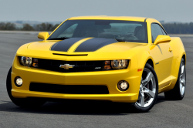 Chevrolet Camaro, 2011, SS, yellow/black bumblebee
Chevrolet Camaro, 2011, SS, yellow/black bumblebee
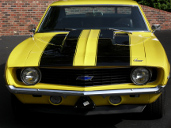 Chevrolet Camaro, 1969, Z/28, yellow/black bumblebee
Chevrolet Camaro, 1969, Z/28, yellow/black bumblebee
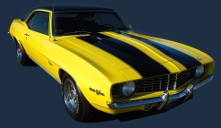 Chevrolet Camaro, 1969, Z/28 302, yellow/black bumblebee
Chevrolet Camaro, 1969, Z/28 302, yellow/black bumblebee
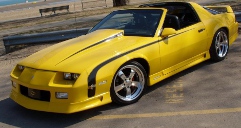 Chevrolet Camaro, Gen3, yellow/black bumblebee
Chevrolet Camaro, Gen3, yellow/black bumblebee
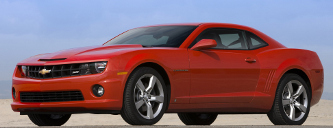 Chevrolet Camaro, 2010, SS, red
Chevrolet Camaro, 2010, SS, red
 Chevrolet Camaro, 2010, SS, red
Chevrolet Camaro, 2010, SS, red
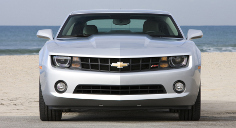 Chevrolet Camaro, 2010, RS, silver
Chevrolet Camaro, 2010, RS, silver
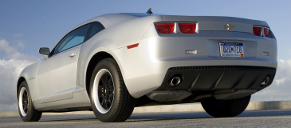 Chevrolet Camaro, 2010, RS, silver
Chevrolet Camaro, 2010, RS, silver
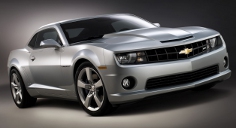 Chevrolet Camaro, 2012, SS, silver
Chevrolet Camaro, 2012, SS, silver
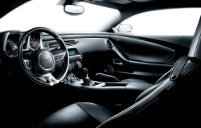 Chevrolet Camaro, 2010, interior
Chevrolet Camaro, 2010, interior
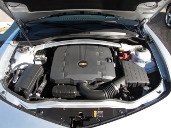 GM HFV6 engine in Chevrolet Camaro, 2011
GM HFV6 engine in Chevrolet Camaro, 2011
review of 2012 Chevrolet Camaro 2LS HFV6 3.6L
Quick summary:
Gen5 Camaro V6 looks like a 1969 Camaro yet drives like a moderately-fast modern sports/luxury car.
Styling of Gen5 Camaro is magnificent. A paragon of a retro-modern car. Had to buy one because any new styling could only be worse (proven true by Gen6).
Camaro Gen5 is actually a Cadillac. These new Camaros were completely derived from Cadillac's CTS (chasis, suspension, V6 engine, etc). GM Holden (Australia) actually did most of Camaro's engineering and testing, while "Chevrolet" acted as a design center doing specifications and styling.
Its V6 engine is named "High Feature V6" (HFV6). Construction is complex. 4 valves per cylinder, 4 camshafts, 3 timing chains, direct fuel injection into cylinders. (A weakness is nylon pads on timing-chain tensioners.) It doesn't have torque nor horsepower curves. Its torque is virtually flat at ~275ft/lbs (240KW) at all RPMs. Its horsepower is virtually a 45 degree diagonal line until ~320HP (~380NM) at ~7000RPM. During cold-start, HFV6 is cantankerous, vibrating like a hot-cammed V8, even after warmed, it still vibrates a little.
Is V6 Gen5 Camaro fast?
Moderately fast.
It will go fast from a stop. Unusual for a small V6, it can accelerate while in a high gear (it can lug like a V8). Jay Leno mentioned a 2010 Camaro with a V6 is faster than a 1968 Camaro SS with a 396 big-block V8. But at higher-speeds on a highway, it doesn't have acceleration of a large V8.
Compared to a 1978 Pontiac Trans-Am with a Pontiac 455 (7.5L) V8, Camaro V6 is faster than Trans-Am from a stop. But this Trans-Am is way faster than Camaro at highway speeds. Apparently, modern drive-trains excel at accelerating a car from a stop, but at high speeds, brute power is needed to overcome aerodynamic drag. Trans-Am feels fast, rocking its front-end up, shaking its hood scoop, fish-tailing, which is fun, but wastes power. Camaro, with its modern drive-train which efficiently transfers engine power to rear wheels, just increases its speed, without any drama.
Camaro's V6 doesn't feel "peaky". Its torque output is flat, doesn't require revving up to a power-band like other small engines. Words to describe sound of V6 sounds are racy and choppy. Sounds better than a 4, not as good as a V8. Apparently, Chevrolet used acoustic tricks, so while inside, V6 sounds racy and moderately loud, but heard outside from a distance, sounds quiet.
Automatic transmission has 6 gears. In normal driving, driver couldn't guess correctly how many gears it has. Has two +/- "tap-shifter" buttons on steering wheel for up/down-shifting in M(anual) mode. Shifters also can be temporarily used in (D)rive mode. Placing shifters on steering wheel wasn't smart, unusable while turning.
Handling is excellent. Gen5 Camaro's can turn tightly like a sports car, yet rides almost as smoothly as a luxury car. Much like a Cadillac CTS. Camaro can turn as tightly as 1978 Pontiac Trans-Am, but Camaro can smoothly accelerate while turning because of its independently-powered rear wheels. Accelerating Trans-Am thru a turn would cause wheel-hopping or fish-tailing.
If unexpectedly teleported inside a Camaro, one wouldn't know it's a Camaro. Camaros have the same swooping styling many other "modern" cars have. Ford continues to design Mustang interiors so a driver feels like being inside a Mustang. 2005 Ford Mustang achieved a more complete retro experience, inside and out, it resembles an old Mustang, even its spacious engine bay with its aging Ford Cologne V6 has the look of old-fashioned simplicity.
2000..2012 Camaros have green LED pixelated displays, which were cast old-fashioned by advent of touch-screen LCD displays in 2013 (but a car is meant to be driven, not to fiddle LCD menus).
"2LS" means base Camaro with HFV6 and automatic transmission. Base models have black steel wheels with thicker tires, which this reviewer prefers. Only special options were Rally Yellow paint and black stripes. Yet came with power windows, satellite radio, cruise control, etc, that used to be on deluxe models.
So, yeh, it looks like an old Camaro, but it doesn't feel nor drive like one.
Rear visibility has wide blind-spots -- driving Gen5 Camaros in reverse is hazardous.
This is its flaw. Backing out is a nervous ordeal, trying to drive by peering thru view-slit of a tank.
Gen5 Camaros desperately needed windows on its two roof rear pillars for visibility.
Chevrolet Camaro - links
www.camaro5.com
Camaros starring in movies